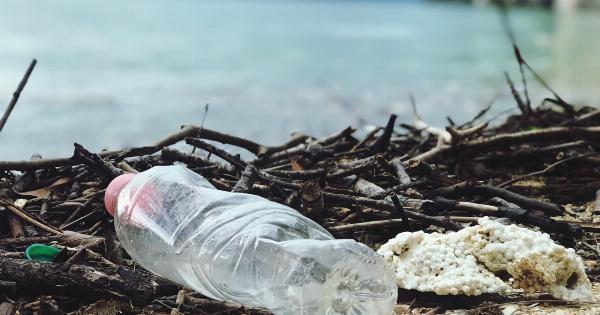In a shocking revelation, a recent study has found the presence of microplastics on the fetal placenta, raising serious concerns about the potential health risks associated with plastic pollution.
The study, conducted by a team of researchers, brings to light the extent of environmental contamination and its profound impact on human health.
The Invisible Threat of Microplastics
Microplastics, tiny particles of plastic less than 5mm in size, have become a pervasive global problem.
These miniature plastics originate from various sources, including synthetic textiles, personal care products, and degradation of larger plastic items. Due to their small size, they can easily enter our food chain through consumption of contaminated water, air, and food.
The ability of microplastics to accumulate in living organisms has raised concerns about its potential adverse effects on human health.
A Startling Discovery
In an attempt to understand the extent of plastic pollution and its impact on human reproduction, researchers focused their attention on the placenta—a crucial organ supporting fetal development.
By analyzing a limited number of placenta samples from healthy pregnancies, they detected the presence of microplastics in every single sample. This groundbreaking finding challenges the long-held belief that the placenta acts as an effective barrier, protecting the developing fetus from environmental toxins.
The Perils of Plastic Pollution
The presence of microplastics on the fetal placenta raises a multitude of concerns.
These tiny particles have the potential to disrupt normal fetal development, interfere with vital nutrients and oxygen supply, and impair the placenta’s ability to filter harmful substances. Additionally, as microplastics contain a range of toxic chemicals, their presence in the placenta could pose risks to the developing nervous and immune systems.
The Need for Further Research
While this study provides compelling evidence of the presence of microplastics on the fetal placenta, further research is needed to fully understand the implications and potential health risks.
Future investigations should delve into the long-term effects of microplastic exposure on both maternal and fetal health. Additionally, exploring strategies to mitigate plastic pollution and advocating for stricter regulations on plastic production and usage are crucial steps towards safeguarding human health.
The Role of Personal Choices
Although the burden of plastic pollution lies largely with industries and policymakers, individuals can also play a significant role in reducing their plastic footprint.
Simple lifestyle changes such as using reusable containers, shopping with eco-friendly bags, and opting for natural and sustainable products can contribute to curbing plastic pollution and preserving the health of future generations.
A Global Crisis
The issue of plastic pollution extends far beyond the findings of this report. It is a global crisis that requires urgent attention and collective action.
Governments, industries, and individuals must come together to implement comprehensive strategies that focus on reducing plastic consumption, improving waste management systems, and developing sustainable alternatives to plastic.
Protecting the Future
The presence of microplastics on the fetal placenta serves as an alarming wake-up call. It emphasizes the need for immediate action to address plastic pollution and protect human health.
By raising awareness, supporting scientific research, and advocating for effective policies, we can work towards a future where plastic pollution is no longer a threat to our well-being.






























